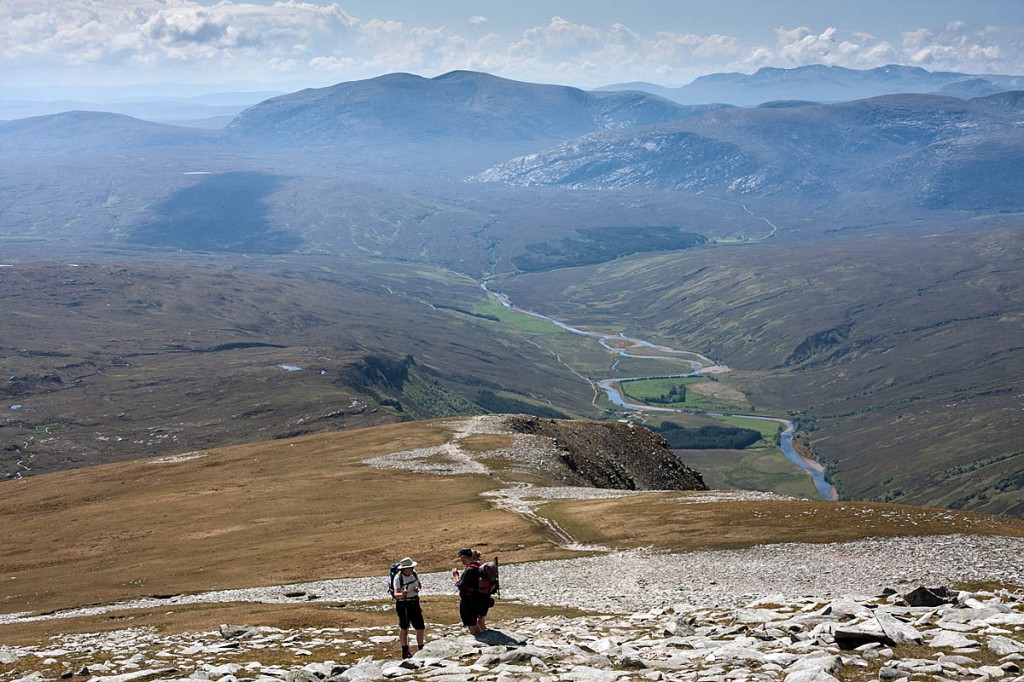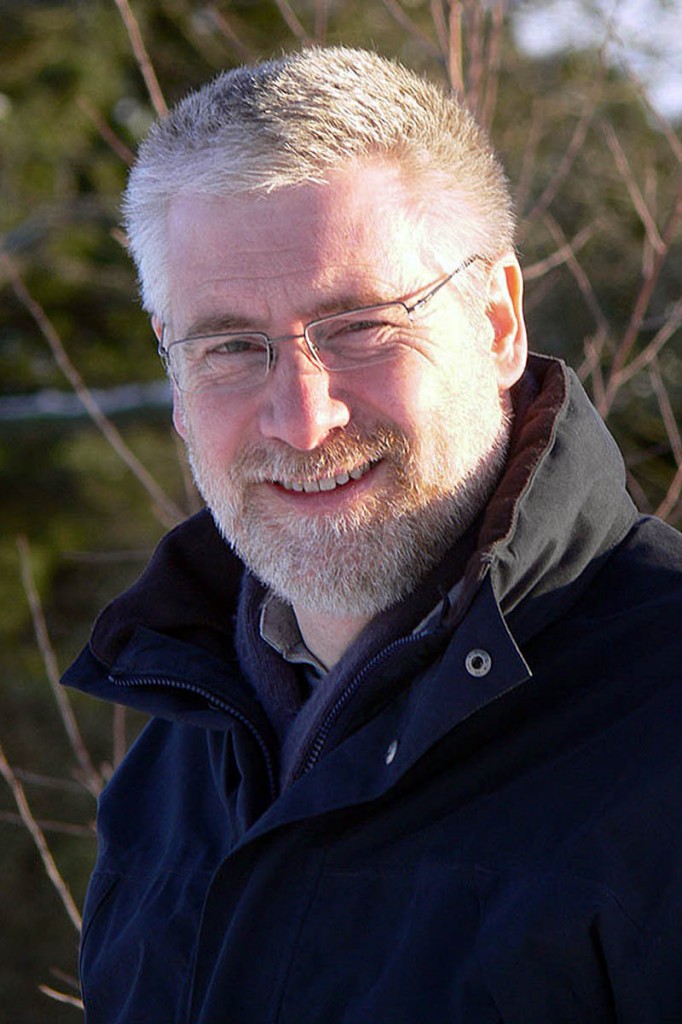Mountaineering Scotland has called for better protection for the nation’s wild land after a court rejected a challenge to a windfarm development.
The representative body for hillwalkers, climbers and mountaineers north of the border said the ruling would degrade the landscape in the far north of Scotland.
The Court of Session said Scottish ministers acted lawfully in approving the plans for a windfarm at Creag Riabhach on the Altnaharra Estate in Sutherland.
Wildland Ltd and the Welbeck Estates brought the judicial review against the ministers. A spokesperson for Wildland Ltd said: “We are saddened and disappointed at the court’s decision.”
Mountaineering Scotland called for wild land to be given absolute protection in planning policy. It said the windfarm will encroach on a wild-land area in one of Scotland’s most valued landscapes.
Views from northern mountains such as Ben Loyal, Foinaven, Arkle, Ben Klibreck and Scotland’s most northerly munro Ben Hope will be affected by the 22-turbine Creag Riabhach windfarm, with five of the turbines actually standing within a wild land area.
In October last year Scottish ministers gave permission for the development to go ahead, but Danish businessman and landowner Anders Povlsen, whose Wildland Ltd owns the neighbouring Ben Loyal, Kinloch and Hope & Melness estates, brought a judicial review to examine the decision in favour of the windfarm on the Altnaharra Estate.
Lord Boyd of Duncansby found against Wildland Ltd, saying it was not for the court to judge whether windfarms should be allowed on designated wild land areas, but to assess whether Scottish ministers had acted properly with respect to existing policy.
Mountaineering Scotland chief executive David Gibson said “While we respect the decision of the court, the decision of the minister to approve this windfarm will render an extraordinary, world-renowned, wild and open landscape completely ordinary.
“This outcome emphasises why the Scottish Government must change its present policy. Wild land areas must get the same absolute protection as national scenic areas and national parks. Time is running out for Scotland’s most precious natural asset: its landscape, as more and more wild land is eroded by development.
“The irony is that there is no need for the Creag Riabhach development; there is already enough operational and consented capacity to meet the Scottish Government’s generation target.”
The Wildland spokesperson said: “Let there be no doubt: this development is a substantial incursion into the wildland area between Foinaven, Ben Hee, Arkle, Ben Hope, Ben Loyal and Ben Klibreck, from whose summits this industrial-scale development will be highly visible.
“We suspect the same can be said for Suilven, Quinag and Canisp in Assynt as well.
“These iconic hills now provide the backdrop to the North Coast 500 and the new tourism businesses that will maintain a sustainable Highland economy for decades to come.”
The North Coast 500 is a road route from Inverness, along the north-eastern, northern and north-western Scottish coast, being touted as Scotland’s answer to Route 66.
The spokesperson said: “Those businesses, and the tourists who support them, are ultimately ill served by policies that seem to afford little protection to wildland areas and national scenic areas across Scotland.
“This particular proposal always seemed so substantial in an area renowned for its scenery, its wildness and nature.
“It is troubling in the extreme that, despite the special qualities of this and other areas of wild land, the Scottish Government has not afforded them the protection under law that they so clearly deserve and need.”
The conservation charity the John Muir Trust echoed Mountaineering Scotland’s call for protection for all wild land.
The trust said the controversy over Creag Riabhach demonstrates the political case for bringing the level of protection for Scotland’s 42 wild land areas into line with national scenic areas and national parks.
A spokesperson said: “The wild land areas map was published by Scottish Natural Heritage in 2014 and subsequently promised ‘significant protection’ in Scottish Government planning policy.
“Since then a number of windfarms applications in and around wild land have been refused consent by the Scottish Government. But the decision last year to approve Creag Riabhach has created uncertainty over the status of the wild land areas map.
The charity’s chief executive Andrew Bachell said: “Although we were not part of this legal case, we were among the organisations which objected to the 22-turbine wind farm, which will extend into wild land area 37.
“We were surprised and disappointed by the original decision, not least because it seemed to fly in the face of eight previous decisions by the Scottish Government to reject major energy developments affecting wild land areas.
“We would now ask the Scottish Government to use the forthcoming Planning Bill to bring consistency and clarity into the decision-making process by bringing wild land areas into line with national scenic areas where major wind farms are deemed ‘unacceptable’ in Scottish planning policy.
“The current ambiguity in the status of wild land areas devours time and money, and can involve councils, planning officials, energy companies, conservation organisations, government ministers, government agencies, lawyers and judges deliberating over a single application.
“Stronger protection would also be in tune with public opinion. A recent Scotland-wide YouGov poll found that 80 per cent agree or strongly agree that wild land areas should be protected, with only five per cent opposed.”
Developers of the Creag Riabhach windfarm said locals would benefit to the tune of £363,000 each year as part of a community contribution scheme. Five jobs would also be created and residents and businesses in the immediate vicinity would have their electricity bills paid by the developers.
It also said extensive drainage improvements over an area of 440ha (1,087 acres) would be put in place to restore the habitat to high quality peatland.



Jim A Johnston
31 August 2017Readers of this report should note that the Creag Riabhach windfarm project is not on the NC 500. Also that the NC 500, while bringing significant benefit along its route, has also created considerable difficulty for local people who have to travel along the single track sections of the route while going about their daily business. One problem is the ignorance displayed by novice drivers on the single track where, while some are attempting to circumnavigate it in as short a time as possible there are others who chose to do so in hired super cars and who are so afraid of damaging these on the badly maintained and rutted surfaces thst they proceed at a snails pace without regard for the regular travellers in their wake.
Further, with regard to the wild land concept, this has been created by a desk based exercise conducted far from the areas affected and entirely without meaningful consultation with the local population who feel themselves forgotten and disenfranchised by successive governments in Westminster and Hollywood. More thought should be given by all concerned to the real life Highlanders who inhabit the affected area who are real people, not mere actors in the fairlyland view of the emptier parts of our country.
Jim A. Johnston
31 August 2017P.S I really meant to say Holyrood and not Hollywood but I'm sure you mstill get my drift!
GeorgeH
01 September 2017In a recent survey, with over 500 people responding, over 80 per cent of them cited unspoilt countryside as what attracted them to the Highlands.
Over 70 per cent of respondents said the presence of wind turbines would affect their decision to stay in the Highlands, with about the same number saying the presence of the over 500 wind turbines currently planned for the Loch Ness area would affect their decision to stay there. Over 80 per cent said they would not choose accommodation with a view of a wind farm, with about the same number reckoning the presence of turbines made Scotland less attractive to tourists.
GeorgeH
01 September 2017PS I was born, raised and still live in our Highlands and know it better than most.
OldManOfTheHills
04 September 2017Obviously the most wild concept is no people and no roads buts thats not very useful to visitors or natives if taken too far.
I suspect the government objectives on windfarm capacity will prove woefully inadequate once the oil runs out and we still wait to see if we can ever create fusion power so we still need more windfarms. So the choice remains as to where we put our windmills:- in a windy spot, near enough to where we need power, reasonably accessible for maintenance and where the installer can buy or rent land.
Regrettably governments and planner must act according to need not just sentiment. Hard to please everyone and single issue campaign groups distort democracy
GeorgeH
05 September 2017ONE year ago, this month, the turbines at the controversial Dunmaglass wind farm south of Inverness began turning and producing electricity.
But during its first 12 months of operation it has been paid more than £2 million in so-called constraints payments – compensation for switching off the turbines.
Dunmaglass is not alone. The latest figures reveal that £69.7 million has been handed out to 17 wind farms in the Highlands in the last seven years for shutting down the turbines on those occasions when Britain’s electricity network is unable to cope with the power they produce.
Dunmaglass, which was built in the Monadhliath hills in the face of strong opposition from locals, environmentalists and outdoor enthusiasts, earned its first constraints payment for developer energy giant Scottish and Southern Energy (SSE) virtually as soon as it became operational.
The Millennium wind farm, in the hills above Fort Augustus and Invermoriston, meanwhile, has earned £11.8 million in constraints payments for its Italian owner, Falck Renewables, in the last six years.
But despite the fact the existing 26 turbines have to be switched off on occasions, the Scottish Government still gave its approval for a 10-turbine extension to the site in February this year, following a public inquiry.
In the same month, the 32-turbine Beinneun wind farm near Fort Augustus was connected to the transmission network, weeks ahead of its contracted connection date.
It received its first constraints payment just two months later, and has since been paid £52,715 not to generate on various occasions.
Ian512
16 September 2017Jim A - many good points.